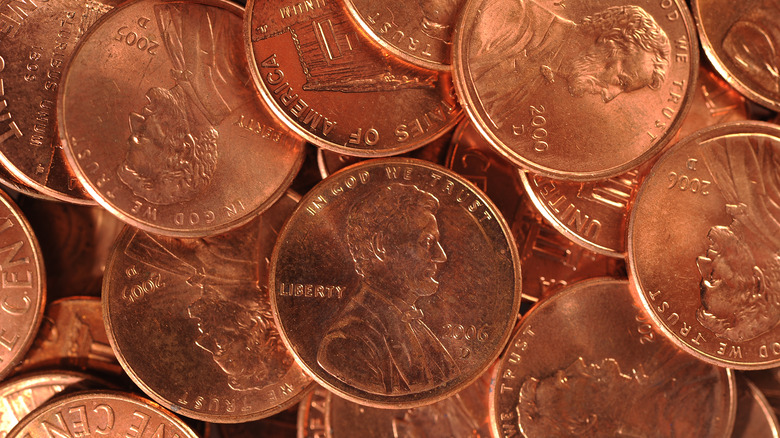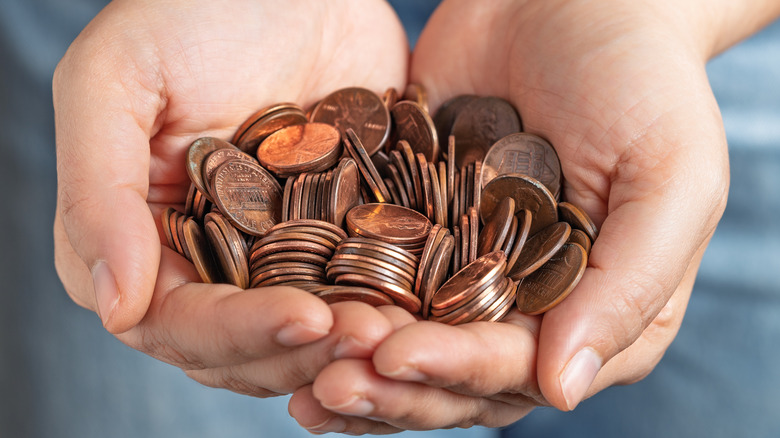Got Pennies? Here's What To Expect As Grocery Stores Struggle To Make Change
If you've been to Kroger lately, you may have noticed new signs at the register: "The U.S. Treasury has stopped production of pennies, which is now impacting supply. If using cash for payment, please consider providing exact change." It's not just the oldest grocery store chain in America. Convenience store Kwik Trip has started rounding all cash purchases down to the nearest five cents. Why? Because while the U.S. Treasury announced in late May it will discontinue minting the penny in 2026, the change is already rippling through grocery stores.
A penny might be worth one cent, but it costs almost four cents to make — a number that increased more than half a cent (20%) from last year, when the U.S. Treasury lost more than $85 million by manufacturing more than 3 billion. Ending production could immediately save $56 million per year. The impact of phasing out the penny, however, may be more expensive for consumers. The Federal Reserve Bank of Richmond estimates that if companies round up to the nearest five cents, it could cost consumers about $6 million each year.
There's another issue: At least 10 states do not legally allow cash transactions to be rounded. Did the U.S. Treasury Department think ahead about logistics? Various national associations say no and have already written to the U.S. Senate Committee on Banking asking them to "create a national law allowing businesses to round cash transactions to the nearest nickel." The letter also requested this not violate SNAP benefit terms.
What else might happen now that the penny is gone?
The penny has played a key role in the food world. Penny candy was an old school treat, and penny restaurants gave a generation of diners respect during the Great Depression, when a cup of coffee and a roll would cost two cents. That will no longer be the case now that the penny is facing extinction. As might be expected, the rules of rounding up or down are likely to be more or less what they taught in school. According to the Federal Reserve Bank of Richmond, purchases ending in 1, 2, 6, or 7 cents are rounded down while purchases ending in 3, 4, 8, or 9 are rounded up. That is a little confusing on paper, but just think of it as being rounded to the nearest five cent integer. Purchases ending in 0 or 5 won't need to be rounded, since they're already at the mark.
It's no secret that grocery store prices have changed the way we shop, either. Are corporations going to adjust item costs to account for tax so that your checkout line total is more likely to come out in intervals of five? Despite cash accounting for only 16% of all payments in 2024, millions of people don't have bank accounts and therefore rely on cash to pay for groceries. Will there be a cash price and a card price? Only time will tell. Hopefully the government can figure out next steps — when it's no longer shut down, of course.

